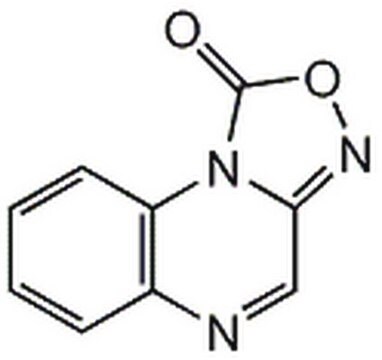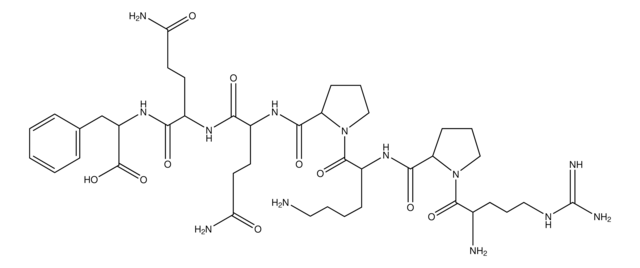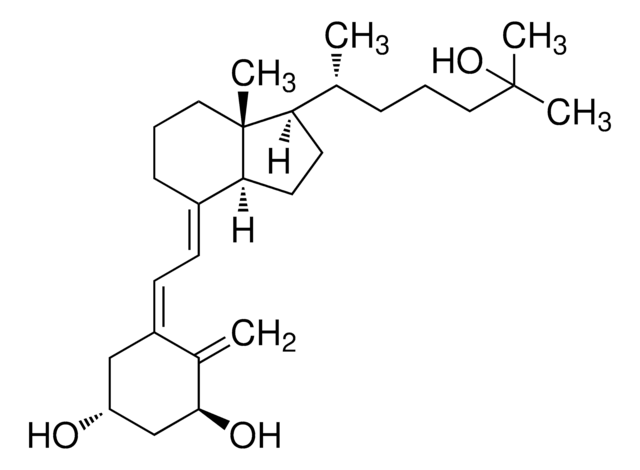C2806
Calcitonin Gene Related Peptide Fragment 8-37 human
≥97% (HPLC), powder
Sinónimos:
α-CGRP 8-37, FBHuman
About This Item
Productos recomendados
Nivel de calidad
Ensayo
≥97% (HPLC)
Formulario
powder
composición
Peptide content, ~70%
temp. de almacenamiento
−20°C
cadena SMILES
CC(C)C[C@H](NC(=O)CNC(=O)[C@H](C)NC(=O)[C@H](CC(C)C)NC(=O)[C@H](CCCNC(N)=N)NC(=O)[C@H](Cc1c[nH]cn1)NC(=O)[C@@H](NC(=O)[C@@H](N)C(C)C)[C@@H](C)O)C(=O)N[C@@H](CC(C)C)C(=O)N[C@@H](CO)C(=O)N[C@@H](CCCNC(N)=N)C(=O)N[C@@H](CO)C(=O)NCC(=O)NCC(=O)N[C@@H](C(C)C)C(=O)N[C@@H](C(C)C)C(=O)N[C@@H](CCCCN)C(=O)N[C@@H](CC(N)=O)C(=O)N[C@@H](CC(N)=O)C(=O)N[C@@H](Cc2ccccc2)C(=O)N[C@@H](C(C)C)C(=O)N3CCC[C@H]3C(=O)N[C@@H]([C@@H](C)O)C(=O)N[C@@H](CC(N)=O)C(=O)N[C@@H](C(C)C)C(=O)NCC(=O)N[C@@H](CO)C(=O)N[C@@H](CCCCN)C(=O)N[C@@H](C)C(=O)N[C@@H](Cc4ccccc4)C(N)=O
InChI
1S/C139H230N44O38/c1-66(2)48-86(161-102(193)60-155-113(197)74(17)159-120(204)87(49-67(3)4)168-118(202)83(40-31-45-152-138(147)148)163-123(207)90(53-80-57-151-65-158-80)173-136(220)111(77(20)188)182-131(215)105(145)69(7)8)121(205)169-88(50-68(5)6)122(206)176-96(64-186)129(213)165-84(41-32-46-153-139(149)150)119(203)175-94(62-184)115(199)156-58-101(192)154-59-104(195)177-107(71(11)12)134(218)179-108(72(13)14)133(217)166-82(39-28-30-44-141)117(201)171-91(54-98(142)189)125(209)172-92(55-99(143)190)124(208)170-89(52-79-36-25-22-26-37-79)126(210)180-109(73(15)16)137(221)183-47-33-42-97(183)130(214)181-110(76(19)187)135(219)174-93(56-100(144)191)127(211)178-106(70(9)10)132(216)157-61-103(194)162-95(63-185)128(212)164-81(38-27-29-43-140)116(200)160-75(18)114(198)167-85(112(146)196)51-78-34-23-21-24-35-78/h21-26,34-37,57,65-77,81-97,105-111,184-188H,27-33,38-56,58-64,140-141,145H2,1-20H3,(H2,142,189)(H2,143,190)(H2,144,191)(H2,146,196)(H,151,158)(H,154,192)(H,155,197)(H,156,199)(H,157,216)(H,159,204)(H,160,200)(H,161,193)(H,162,194)(H,163,207)(H,164,212)(H,165,213)(H,166,217)(H,167,198)(H,168,202)(H,169,205)(H,170,208)(H,171,201)(H,172,209)(H,173,220)(H,174,219)(H,175,203)(H,176,206)(H,177,195)(H,178,211)(H,179,218)(H,180,210)(H,181,214)(H,182,215)(H4,147,148,152)(H4,149,150,153)/t74-,75-,76+,77+,81-,82-,83-,84-,85-,86-,87-,88-,89-,90-,91-,92-,93-,94-,95-,96-,97-,105-,106-,107-,108-,109-,110-,111-/m0/s1
Clave InChI
NDACAFBDTQIYCQ-YVQXRMNASA-N
Información sobre el gen
human ... CALCA(796)
¿Está buscando productos similares? Visita Guía de comparación de productos
Categorías relacionadas
Amino Acid Sequence
Descripción general
Aplicación
Acciones bioquímicas o fisiológicas
Calcitonin gene-related peptide (CALCA) serves as a proangiogenic growth factor in the development of human placenta. Mutations of CALCA gene is associated with Parkinson′s disease, ovarian cancer and essential hypertension. CALCA induce vascular endothelial cell proliferation, migration and capillary-like tube formation.
Otras notas
Código de clase de almacenamiento
11 - Combustible Solids
Clase de riesgo para el agua (WGK)
WGK 3
Punto de inflamabilidad (°F)
Not applicable
Punto de inflamabilidad (°C)
Not applicable
Equipo de protección personal
Eyeshields, Gloves, type N95 (US)
Elija entre una de las versiones más recientes:
¿Ya tiene este producto?
Encuentre la documentación para los productos que ha comprado recientemente en la Biblioteca de documentos.
Los clientes también vieron
Nuestro equipo de científicos tiene experiencia en todas las áreas de investigación: Ciencias de la vida, Ciencia de los materiales, Síntesis química, Cromatografía, Analítica y muchas otras.
Póngase en contacto con el Servicio técnico
















